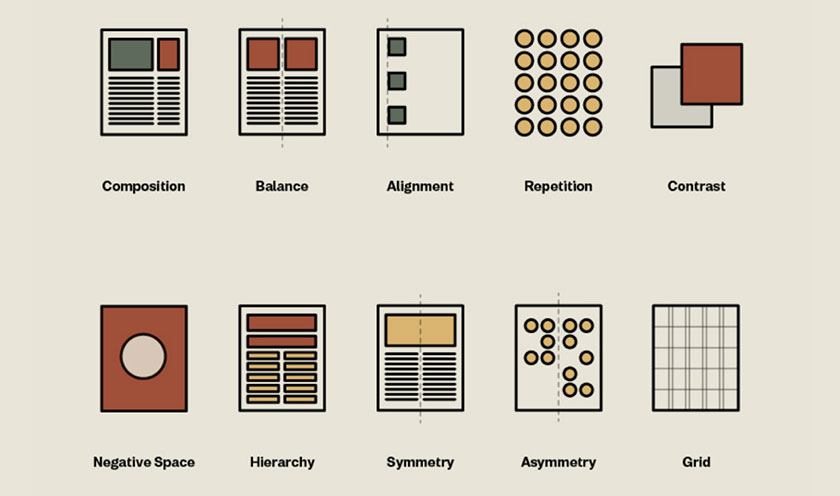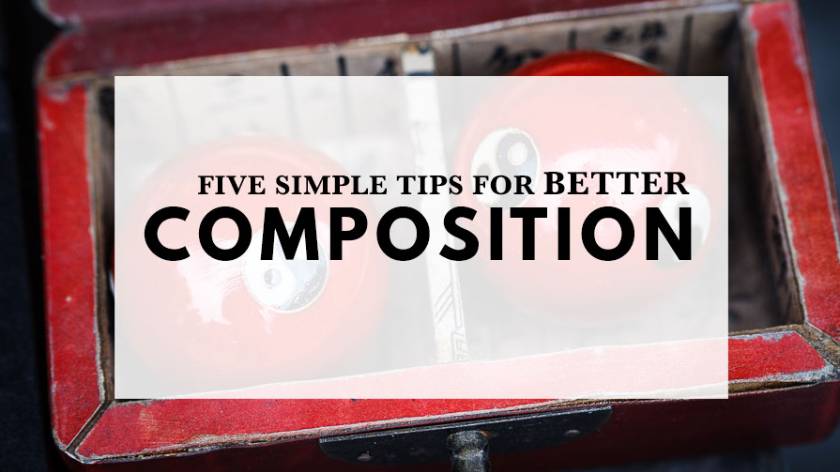Best Selling Products
Some specialized design terms
Nội dung
- Example of Email Exchange
- Annotation of some quick terms in design majors
- Brief (summary table)
- Selects (selection)
- Mood Board (Mood Board (digital or document))
- Mark-ups (marks)
- Turnaround (go back, modify, rotate)
- References (referrer, guarantor)
- Drafts (drafts, sketches, blueprints)
- Sign-off
- Amendments/Revisions (revisions/revisions)

For anyone with years of experience in commercial editing, the term comes naturally, but each one of us remembers a time when the language of the industry wasn't as clear as it could be. so.  When talking to an art director who may want to hire you, it's important to speak their language. Clear communication and understanding between you and your clients builds trust, helps you deliver exactly what your customers want, and gives your clients confidence that they've hired the right talent. If you're a skilled amateur looking for your first commercial job, check out this quick guide to some common industry terms and conduct correspondence with your clients with confidence.
When talking to an art director who may want to hire you, it's important to speak their language. Clear communication and understanding between you and your clients builds trust, helps you deliver exactly what your customers want, and gives your clients confidence that they've hired the right talent. If you're a skilled amateur looking for your first commercial job, check out this quick guide to some common industry terms and conduct correspondence with your clients with confidence.  This is your guide provided by the customer. The summary is any information related to your role in the process and may include instructions for following a particular style and removing, smoothing, or repairing specific elements. The summary includes all written or spoken instructions before you begin and can be supplemented by digital sheets and reference materials.
This is your guide provided by the customer. The summary is any information related to your role in the process and may include instructions for following a particular style and removing, smoothing, or repairing specific elements. The summary includes all written or spoken instructions before you begin and can be supplemented by digital sheets and reference materials.  Usually, the initial phase of the shoot includes gathering reference photos to assist the photographer. It can be helpful if you require a PDF to get an idea of the desired look and feel for the finished photos, especially if the selections are incomplete or not taken yet. It is often a great benefit to see what the photographer is shooting for.
Usually, the initial phase of the shoot includes gathering reference photos to assist the photographer. It can be helpful if you require a PDF to get an idea of the desired look and feel for the finished photos, especially if the selections are incomplete or not taken yet. It is often a great benefit to see what the photographer is shooting for.  Minor changes are required after submitting the draft. 'The shirt is a bit plain, which removes this stray hair and is a little less red than the skin tone' is considered modified. A fully revised shot is considered a revision and a series of revised footage is a new draft. In a lot of cases, I've seen revisions, additions, and revisions used interchangeably. Of course, each regional and international term has different or more advanced terminology, and some terms are specific to certain companies and divisions, but the language outlined here is common to all. with English-speaker markets. So ask for references, agree to a change, and submit your first draft for any revisions! And remember, the better you understand the summary, the fewer revisions you'll need before the subscription completes that all-important job!
Minor changes are required after submitting the draft. 'The shirt is a bit plain, which removes this stray hair and is a little less red than the skin tone' is considered modified. A fully revised shot is considered a revision and a series of revised footage is a new draft. In a lot of cases, I've seen revisions, additions, and revisions used interchangeably. Of course, each regional and international term has different or more advanced terminology, and some terms are specific to certain companies and divisions, but the language outlined here is common to all. with English-speaker markets. So ask for references, agree to a change, and submit your first draft for any revisions! And remember, the better you understand the summary, the fewer revisions you'll need before the subscription completes that all-important job!
 When talking to an art director who may want to hire you, it's important to speak their language. Clear communication and understanding between you and your clients builds trust, helps you deliver exactly what your customers want, and gives your clients confidence that they've hired the right talent. If you're a skilled amateur looking for your first commercial job, check out this quick guide to some common industry terms and conduct correspondence with your clients with confidence.
When talking to an art director who may want to hire you, it's important to speak their language. Clear communication and understanding between you and your clients builds trust, helps you deliver exactly what your customers want, and gives your clients confidence that they've hired the right talent. If you're a skilled amateur looking for your first commercial job, check out this quick guide to some common industry terms and conduct correspondence with your clients with confidence. Example of Email Exchange
Let's look at a fake email exchange and include some key terms (all explained at the end of this article). Here's an example of an email a person might receive when corrected. Hi X, We have a beautiful six-image shoot that we'll need to retouch for the Brand ad (we'll have selections by Thursday) in Y Magazine. Can you tell me a little bit about it? Is your availability next week? Best regards, This email may have been sent to a few editors by now, and if your answer isn't impressive, or simply less impressive than another, you may not get the job. Giving the client just enough information to satisfy their request is not enough to engage them in a progressive dialogue and certainly not enough for you to understand the scope of the project and of course do How to give an accurate quote. Let's see an example response: Hi Z, Thank you for your contact, I have time next week and I would love to work with you. Do you have a summary/reference for the shoot? If you can send through a few options that would be great. What is the ideal rotation? If I can get the selections and summaries, I'll submit the first draft on Tuesday for any revisions and we'll have plenty of time for final revisions. Best regards, There may be a lot of questions on that response email, but it's a good example of responding to an email to your customer. Essentially, you need to know what the problem is to help you deliver a product, and in doing so present yourself as a professional service provider who understands the process well. make the customer experience when using your service enjoyable. The key in that industry is creativity, and that's what you want your customers to have.Annotation of some quick terms in design majors
Brief (summary table)
 This is your guide provided by the customer. The summary is any information related to your role in the process and may include instructions for following a particular style and removing, smoothing, or repairing specific elements. The summary includes all written or spoken instructions before you begin and can be supplemented by digital sheets and reference materials.
This is your guide provided by the customer. The summary is any information related to your role in the process and may include instructions for following a particular style and removing, smoothing, or repairing specific elements. The summary includes all written or spoken instructions before you begin and can be supplemented by digital sheets and reference materials. Selects (selection)
The photos are chosen by the client for the campaign, which can be as few as two or three out of hundreds of photos taken, or many more for visual books or e-commerce. Most of the photos taken during the day will go largely unseen and unpublished, but you should ask the client if you feel that one of the unselected photos might be good, such as a elements for composite images.Mood Board (Mood Board (digital or document))
 Usually, the initial phase of the shoot includes gathering reference photos to assist the photographer. It can be helpful if you require a PDF to get an idea of the desired look and feel for the finished photos, especially if the selections are incomplete or not taken yet. It is often a great benefit to see what the photographer is shooting for.
Usually, the initial phase of the shoot includes gathering reference photos to assist the photographer. It can be helpful if you require a PDF to get an idea of the desired look and feel for the finished photos, especially if the selections are incomplete or not taken yet. It is often a great benefit to see what the photographer is shooting for. Mark-ups (marks)
Usually sent as jpegs in today's digital age (although when working on-site you will often be provided with hand-annotated proofs), Mark-ups are a version of a selection with notes and markings indicating the changes expected by the customer.Turnaround (go back, modify, rotate)
Time taken to deliver the final product. The client will expect you to 'turn around' the project before the agreed deadline.References (referrer, guarantor)
Example photos capture the feel and style of editing as per the client's request. Customers will outline their requirements briefly, but of course 'a picture is worth a thousand words' and references are the ideal way to understand the customer's vision for the final product. .Drafts (drafts, sketches, blueprints)
Your first sketch is the first submission to the client of edited photos. They can be signed off or marked for modification. After completing the modifications, you will submit a second sketch. When the customer is satisfied, you have a final design.Sign-off
When the client is satisfied with the edited photos, they are considered 'contracted.' The term suggests a signature from the Art/Marketing Director to signify completion and readiness to print and print the artwork.Amendments/Revisions (revisions/revisions)
 Minor changes are required after submitting the draft. 'The shirt is a bit plain, which removes this stray hair and is a little less red than the skin tone' is considered modified. A fully revised shot is considered a revision and a series of revised footage is a new draft. In a lot of cases, I've seen revisions, additions, and revisions used interchangeably. Of course, each regional and international term has different or more advanced terminology, and some terms are specific to certain companies and divisions, but the language outlined here is common to all. with English-speaker markets. So ask for references, agree to a change, and submit your first draft for any revisions! And remember, the better you understand the summary, the fewer revisions you'll need before the subscription completes that all-important job!
Minor changes are required after submitting the draft. 'The shirt is a bit plain, which removes this stray hair and is a little less red than the skin tone' is considered modified. A fully revised shot is considered a revision and a series of revised footage is a new draft. In a lot of cases, I've seen revisions, additions, and revisions used interchangeably. Of course, each regional and international term has different or more advanced terminology, and some terms are specific to certain companies and divisions, but the language outlined here is common to all. with English-speaker markets. So ask for references, agree to a change, and submit your first draft for any revisions! And remember, the better you understand the summary, the fewer revisions you'll need before the subscription completes that all-important job! Sadesign Co., Ltd. provides the world's No. 1 warehouse of cheap copyrighted software with quality: Panel Retouch, Adobe Photoshop Full App, Premiere, Illustrator, CorelDraw, Chat GPT, Capcut Pro, Canva Pro, Windows Copyright Key, Office 365 , Spotify, Duolingo, Udemy, Zoom Pro...
Contact information
SADESIGN software Company Limited
Sadesign Co., Ltd. provides the world's No. 1 warehouse of cheap copyrighted software with quality: Panel Retouch, Adobe Photoshop Full App, Premiere, Illustrator, CorelDraw, Chat GPT, Capcut Pro, Canva Pro, Windows Copyright Key, Office 365 , Spotify, Duolingo, Udemy, Zoom Pro...
Contact information
SADESIGN software Company Limited












































